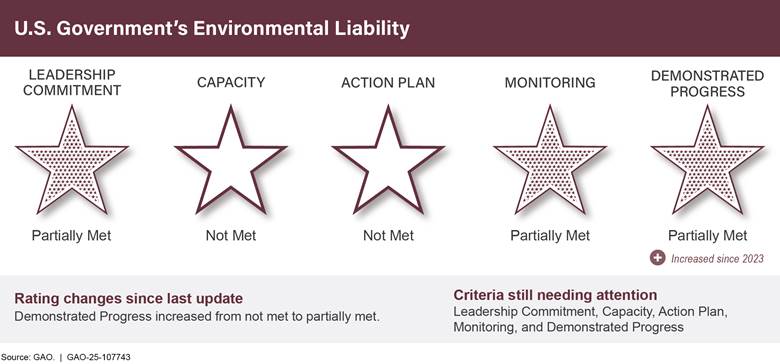Executive Summary
A national cross-sectional study was conducted in Lebanon to assess diet quality and its determinants, providing critical insights relevant to the United Nations Sustainable Development Goals (SDGs), particularly SDG 2 (Zero Hunger) and SDG 3 (Good Health and Well-being). The study, involving 444 adults, evaluated diet quality through three key metrics: Household Dietary Diversity (HDD), adherence to the Mediterranean Diet (MD), and the Dietary Phytochemical Index (DPI). Findings reveal a significant public health challenge, with 47.3% of participants experiencing food insecurity, undermining progress towards SDG 2. Diet quality was suboptimal, with 56.3% of households having low dietary diversity and a low mean DPI (22.25%), indicating poor nutritional intake that threatens SDG 3. While 54.1% showed fair-to-good MD adherence, this was paradoxically higher among the food-insecure. Sociodemographic factors linked to other SDGs were significant predictors: university education (SDG 4) and employment (SDG 8) predicted higher HDD, while food insecurity (SDG 2) reduced it. Female sex (SDG 5) and being unmarried were associated with greater MD adherence and higher DPI. Household crowding, a challenge to SDG 11 (Sustainable Cities and Communities), was associated with a lower DPI. These results underscore the urgent need for integrated, systemic interventions that address food security and nutrition through a multi-sectoral approach, aligning with SDG 17 (Partnerships for the Goals), to improve public health outcomes in Lebanon.
1.0 Introduction: The Nexus of Nutrition, Health, and Sustainable Development in Lebanon
1.1 The Challenge to SDG 2 (Zero Hunger) and SDG 3 (Good Health and Well-being)
A healthy diet is fundamental to achieving SDG 3 (Good Health and Well-being), as it protects against all forms of malnutrition and reduces the risk of noncommunicable diseases (NCDs). However, global access to nutritious food is unequal, with an estimated 3 billion people unable to afford a healthy diet, severely impeding progress on SDG 2 (Zero Hunger). Lebanon, a low- and middle-income country, is experiencing a severe nutrition transition compounded by multiple crises, including financial collapse and the Beirut Port explosion. This has led to rising food insecurity, with 47.3% of households affected, and a shift towards energy-dense, nutrient-poor diets. These trends directly threaten the health and well-being of the population, increasing the prevalence of nutrient deficiencies and NCDs, and represent a significant setback for achieving both SDG 2 and SDG 3.
1.2 Study Objectives in the Context of the SDGs
Given the escalating crises and their impact on food systems and public health, this study was initiated to provide an evidence base for policy and intervention. The primary objective was to assess the diet quality of Lebanese adults using a multi-faceted approach and examine its association with food insecurity and key sociodemographic factors. The study specifically evaluates:
- Household Dietary Diversity (HDD): A measure of access to a variety of foods, crucial for nutrient adequacy (SDG 2).
- Mediterranean Diet (MD) Adherence: A globally recognized healthy dietary pattern linked to reduced NCD risk (SDG 3).
- Dietary Phytochemical Index (DPI): An indicator of plant-based food consumption, which is protective against chronic diseases (SDG 3).
By analyzing these indicators against determinants such as food insecurity, education (SDG 4), employment (SDG 8), and gender (SDG 5), this report aims to inform targeted strategies to improve nutrition and health outcomes in Lebanon.
2.0 Methodology: A Framework for Assessing Diet Quality
2.1 Study Design and Sampling
A cross-sectional survey was conducted from May to September 2022. A nationally representative sample of 444 adults aged 18–64 years was selected using a stratified cluster sampling technique across the eight Lebanese governorates. This method ensured representation across geographical regions and genders, strengthening the validity of the findings for national-level policy consideration.
2.2 Data Collection and Key Indicators
Data were collected through a combination of face-to-face anthropometric assessments and phone-based questionnaires administered by trained dietitians. The following tools were used to measure key variables related to the SDGs:
- Food Security Status (SDG 2): Assessed using the validated Arab Family Food Security Scale (AFFSS).
- Dietary Intake (SDG 3): Measured using a validated 157-item food frequency questionnaire (FFQ) and two non-consecutive 24-hour recalls to ensure accuracy.
- Household Dietary Diversity (HDD): Calculated using the Food Consumption Score (FCS), a global tool reflecting household dietary variety.
- Mediterranean Diet (MD) Adherence: Evaluated using the 14-item Mediterranean Diet Adherence Screener (14-MEDAS).
- Dietary Phytochemical Index (DPI): Derived from the proportion of energy intake from phytochemical-rich foods.
- Sociodemographic Factors (SDGs 4, 5, 8, 11): Data on education, gender, employment status, and household crowding were collected to identify key determinants of diet quality.
3.0 Key Findings: Diet Quality and Its Determinants
3.1 Overall Diet Quality Assessment
The diet quality among Lebanese adults is alarmingly poor, reflecting significant challenges to achieving national health and nutrition goals.
- Low Dietary Diversity: More than half of the households (56.3%) exhibited low dietary diversity (FCS < 42), indicating a monotonous diet lacking essential nutrients.
- Moderate MD Adherence: While 54.1% of participants showed fair to very good adherence to the MD, consumption of key protective components like olive oil (0.5%), nuts and seeds (1.1%), and legumes (1.6%) was extremely low.
- Low Phytochemical Intake: The mean DPI was only 22.25% of total energy intake, signifying a low consumption of plant-based foods essential for preventing NCDs.
3.2 Factors Influencing Household Dietary Diversity (HDD)
Progress on SDG 2 (Zero Hunger) is directly impacted by socioeconomic factors that determine access to diverse foods. The analysis revealed that:
- Food Insecurity (SDG 2): Participants experiencing food insecurity had 58% lower odds of achieving high HDD (aOR: 0.42).
- Employment (SDG 8): Being employed increased the odds of having high HDD by 67% (aOR: 1.67).
- Education (SDG 4): Having a university education more than tripled the odds of high HDD compared to lower education levels (aOR: 3.29).
3.3 Factors Influencing Mediterranean Diet (MD) Adherence
Adherence to the MD was influenced by a complex interplay of economic and social factors.
- Food Insecurity (SDG 2): Paradoxically, participants with food insecurity had 63% higher odds of adhering to the MD (aOR: 1.63), likely due to reliance on cheaper staples like grains and legumes and reduced consumption of expensive sweets and processed foods.
- Gender (SDG 5): Female participants had 66% higher odds of adhering to the MD than males (aOR: 1.66).
- Marital Status: Unmarried individuals were more likely to adhere to the MD (aOR: 1.49).
3.4 Factors Influencing Dietary Phytochemical Index (DPI)
Intake of protective phytochemicals was associated with demographic and household conditions.
- Age and Gender (SDG 5): Older adults (51-64 years) and female participants were significantly more likely to have a high DPI.
- Household Crowding (SDG 11): Living in a crowded household, an indicator of poor living conditions, was associated with lower odds of a high DPI (aOR: 0.65), highlighting how inadequate housing can negatively impact nutrition.
3.5 Health Outcomes and Links to SDG 3
The poor diet quality observed is manifesting in adverse health outcomes, creating a double burden of malnutrition that challenges SDG 3. The majority of participants (61.9%) were overweight or obese, and 25% reported at least one chronic disease, with anemia and hypertension being the most prevalent. This coexistence of food insecurity with high rates of obesity and NCDs points to a systemic failure in the food environment.
4.0 Discussion: Interpreting the Findings through the SDG Lens
4.1 The Paradox of Food Insecurity and Diet Choices (SDG 2)
The finding that food insecurity is associated with lower dietary diversity but higher MD adherence reveals the complex coping mechanisms of crisis-affected populations. While food-insecure individuals are forced to limit the variety of foods they consume, their reliance on cheaper, plant-based staples (legumes, grains) and reduced intake of costly unhealthy items (sweets, processed meats) coincidentally aligns with some aspects of the MD. However, this does not signify a healthy dietary pattern, as their overall diet lacks diversity and essential micronutrients, failing to meet the core objectives of SDG 2.
4.2 The Role of Socioeconomic Factors (SDG 4, 5, 8, 11)
This report clearly demonstrates that diet quality is not merely a matter of individual choice but is shaped by a web of socioeconomic determinants.
- SDG 4 & 8: Higher education and stable employment provide the knowledge and economic capacity to access a diverse and healthy diet.
- SDG 5: Gender disparities persist, with women showing healthier dietary patterns, which may reflect traditional roles in food preparation but also different health awareness levels.
- SDG 11: Household crowding, a proxy for lower socioeconomic status and inadequate housing, is a significant barrier to achieving a high-quality, phytochemical-rich diet.
4.3 Public Health Implications and the Double Burden of Malnutrition (SDG 3)
Lebanon is facing a severe public health crisis characterized by the double burden of malnutrition—the coexistence of undernutrition (micronutrient deficiencies from low dietary diversity) and overnutrition (high rates of obesity and NCDs). This situation is a direct consequence of a food system that makes energy-dense, nutrient-poor foods more accessible and affordable than healthy, diverse options. Addressing this requires a fundamental shift in public health strategy focused on creating healthier food environments, a key target within SDG 3.
5.0 Conclusion and Recommendations for Achieving the SDGs
5.1 Summary of the Public Health Challenge
The diet quality of Lebanese adults is critically low, driven by widespread food insecurity and socioeconomic vulnerabilities. The prolonged national crises have severely impacted the population’s ability to access and afford nutritious food, leading to low dietary diversity, inadequate intake of protective phytochemicals, and a high burden of NCDs. This situation presents a formidable obstacle to achieving SDG 2 (Zero Hunger) and SDG 3 (Good Health and Well-being).
5.2 Policy Recommendations for Multisectoral Action (SDG 17)
Addressing this complex challenge requires a coordinated, multisectoral approach, as envisioned in SDG 17 (Partnerships for the Goals). The following interventions are recommended:
- Strengthen Food Systems: Implement policies that incentivize the production, distribution, and retail of fresh, nutritious foods like fruits, vegetables, and legumes while discouraging foods high in unhealthy fats and sugars. This includes agricultural support and food pricing strategies.
- Promote Nutrition Education: Leverage the link between higher education and better diet quality by launching national nutrition education campaigns in schools, workplaces, and communities to foster healthier dietary choices and improve health literacy (supports SDG 4).
- Integrate Nutrition into Social Safety Nets: Ensure that food assistance programs and social safety nets are designed to improve dietary diversity and quality, not just caloric intake, for food-insecure households.
- Continuous Monitoring and Surveillance: Establish a robust national system for continuously monitoring food security, dietary intake, and nutritional status to guide evidence-based policymaking and track progress towards the SDGs.
- Foster Public-Private Partnerships: Engage private sector stakeholders, civil society, and international partners to collaboratively build a resilient and healthy food system for Lebanon.
Analysis of Sustainable Development Goals in the Article
1. Which SDGs are addressed or connected to the issues highlighted in the article?
The article on diet quality and food insecurity in Lebanon addresses several Sustainable Development Goals (SDGs) by examining the interplay between nutrition, health, and socioeconomic factors. The following SDGs are relevant:
- SDG 2: Zero Hunger: This is the most central SDG, as the study directly investigates food insecurity (FI) and malnutrition in the form of poor diet quality (low dietary diversity, moderate Mediterranean diet adherence, and low phytochemical intake) among Lebanese adults.
- SDG 3: Good Health and Well-being: The article connects poor diet quality to an increased risk of noncommunicable diseases (NCDs) such as cancer, diabetes, and cardiovascular diseases. It also reports on the prevalence of overweight, obesity, anemia, and hypertension, which are key health concerns.
- SDG 4: Quality Education: The study identifies a significant link between educational attainment and diet quality, showing that individuals with a university education have better dietary diversity. This highlights education as a key determinant of health and nutritional outcomes.
- SDG 5: Gender Equality: The analysis reveals significant differences in dietary patterns between genders, with females showing higher adherence to the Mediterranean diet and a higher dietary phytochemical index. This points to gender-specific behaviors and outcomes related to health and nutrition.
- SDG 8: Decent Work and Economic Growth: The article establishes a clear connection between employment status and dietary diversity, indicating that being employed is a predictor of better diet quality. This underscores the role of economic stability in achieving nutritional well-being.
- SDG 10: Reduced Inequalities: The research highlights how socioeconomic disparities, such as food insecurity, low income, and household crowding, negatively impact diet quality. This directly addresses the goal of reducing inequalities in access to resources and opportunities that affect health.
2. What specific targets under those SDGs can be identified based on the article’s content?
Based on the issues discussed, the following specific SDG targets are relevant:
- Target 2.1: By 2030, end hunger and ensure access by all people, in particular the poor and people in vulnerable situations, including infants, to safe, nutritious and sufficient food all year round.
- Explanation: The article directly addresses this target by assessing food insecurity in Lebanon, finding that “47.3% of the participants experienced FI.” It also highlights the lack of access to “safe, nutritious, and sufficient food” for a significant portion of the population.
- Target 2.2: By 2030, end all forms of malnutrition, including achieving, by 2025, the internationally agreed targets on stunting and wasting in children under 5 years of age, and address the nutritional needs of adolescent girls, pregnant and lactating women and older persons.
- Explanation: The study focuses on malnutrition in adults, a key aspect of this target. It assesses poor diet quality through low Household Dietary Diversity (HDD), moderate Mediterranean Diet (MD) adherence, and low Dietary Phytochemical Index (DPI). The finding that “Lebanon is undergoing a nutrition transition that increases the risk of nutritional deficiencies and noncommunicable diseases” directly relates to ending all forms of malnutrition.
- Target 3.4: By 2030, reduce by one-third premature mortality from non-communicable diseases (NCDs) through prevention and treatment and promote mental health and well-being.
- Explanation: The article emphasizes that a healthy diet “reduces the risk of noncommunicable diseases (NCDs) such as cancer, diabetes, and cardiovascular diseases (CVDs).” It reports a high prevalence of NCD risk factors, with “61.9% [having] either overweight or obesity” and “25% reported having at least one chronic disease,” including hypertension. This highlights the urgency of improving diet quality to prevent NCDs.
- Target 4.4: By 2030, substantially increase the number of youth and adults who have relevant skills, including technical and vocational skills, for employment, decent jobs and entrepreneurship.
- Explanation: While not a direct measure of skills, the article shows that education level is a critical determinant of well-being. The finding that having a “university education… predicted higher HDD” suggests that higher education equips individuals with the knowledge or resources to make healthier life choices, which aligns with the broader goal of this target.
- Target 5.5: Ensure women’s full and effective participation and equal opportunities for leadership in political, economic and public life.
- Explanation: The article provides data disaggregated by gender, showing that “female sex… was associated with greater MD adherence” and a “higher DPI.” This analysis of gender-specific outcomes is crucial for understanding and addressing inequalities that affect women’s health and well-being, a foundational aspect of ensuring equal participation in all areas of life.
- Target 8.5: By 2030, achieve full and productive employment and decent work for all women and men, including for young people and persons with disabilities, and equal pay for work of equal value.
- Explanation: The study links employment directly to better nutritional outcomes, stating that “Being employed… predicted higher HDD.” This demonstrates how decent work and economic stability are prerequisites for achieving food security and a healthy diet.
- Target 10.2: By 2030, empower and promote the social, economic and political inclusion of all, irrespective of age, sex, disability, race, ethnicity, origin, religion or economic or other status.
- Explanation: The research clearly shows that economic status is a major driver of inequality in nutrition. It finds that “FI reduced the odds” of high dietary diversity, and “household crowding reduced” the dietary phytochemical index. These findings illustrate how economic exclusion leads to poorer health outcomes.
3. Are there any indicators mentioned or implied in the article that can be used to measure progress towards the identified targets?
The article provides several quantitative measures and findings that serve as direct or proxy indicators for the identified targets:
- For Target 2.1:
- Indicator: Prevalence of food insecurity. The article uses the “Arab family food security scale (AFFSS)” and reports a prevalence of 47.3% food insecurity among participants. This is a direct measure corresponding to SDG Indicator 2.1.2 (Prevalence of moderate or severe food insecurity).
- For Target 2.2:
- Indicator: Measures of diet quality. The study uses three specific tools:
- Household Dietary Diversity (HDD): Measured by the Food Consumption Score (FCS), with 56.3% of households having low dietary diversity.
- Mediterranean Diet (MD) Adherence: Measured by the 14-MEDAS score, with 54.1% showing fair-to-very good adherence, implying nearly half have weak adherence.
- Dietary Phytochemical Index (DPI): The mean DPI was low, accounting for only 22.25% of total energy intake.
- Indicator: Measures of diet quality. The study uses three specific tools:
- For Target 3.4:
- Indicator: Prevalence of NCDs and their risk factors. The article reports:
- Prevalence of overweight or obesity: 61.9% of participants.
- Prevalence of chronic diseases: 25% of participants reported at least one.
- Specific conditions reported include anemia (32.4%) and hypertension (30.6%) among those with chronic diseases.
- Indicator: Prevalence of NCDs and their risk factors. The article reports:
- For Target 4.4:
- Indicator: Association between education level and diet quality. The finding that a university education predicted higher HDD (aOR: 3.29) serves as a proxy indicator showing the positive impact of education on nutritional outcomes.
- For Target 5.5:
- Indicator: Gender-disaggregated data on diet quality. The study found that females had higher odds of MD adherence (aOR: 1.66) and a higher DPI (aOR: 1.7) compared to males, serving as an indicator of gender differences in health behaviors.
- For Target 8.5:
- Indicator: Association between employment status and diet quality. The finding that employed participants had higher odds of a high HDD (aOR: 1.67) acts as an indicator of the positive effect of employment on nutrition.
- For Target 10.2:
- Indicator: Impact of socioeconomic status on diet quality. The article provides several indicators of inequality:
- Food insecurity status: FI was associated with lower odds of high HDD (aOR: 0.42).
- Household crowding: Crowding was associated with lower odds of a high DPI (aOR: 0.65).
- Indicator: Impact of socioeconomic status on diet quality. The article provides several indicators of inequality:
4. Summary Table of Findings
| SDGs | Targets | Indicators |
|---|---|---|
| SDG 2: Zero Hunger | 2.1: End hunger and ensure access to safe, nutritious and sufficient food. | Prevalence of food insecurity (47.3% of participants experienced FI, measured by AFFSS). |
| 2.2: End all forms of malnutrition. |
|
|
| SDG 3: Good Health and Well-being | 3.4: Reduce premature mortality from non-communicable diseases (NCDs). |
|
| SDG 4: Quality Education | 4.4: Increase the number of adults with relevant skills for employment and decent jobs. | Association between university education and higher household dietary diversity (aOR: 3.29). |
| SDG 5: Gender Equality | 5.5: Ensure women’s full and effective participation and equal opportunities. |
|
| SDG 8: Decent Work and Economic Growth | 8.5: Achieve full and productive employment and decent work for all. | Association between employment and higher household dietary diversity (aOR: 1.67). |
| SDG 10: Reduced Inequalities | 10.2: Empower and promote the social and economic inclusion of all. |
|
Source: nature.com







